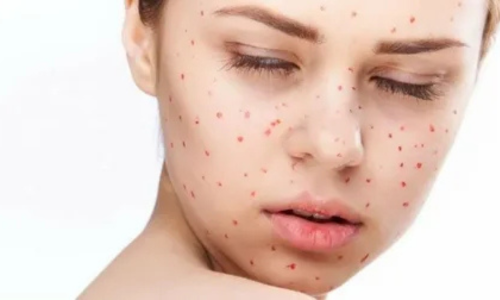
What Do Red Dots on Your Skin Mean?
Have you ever noticed small red dots on your skin, often called “ruby spots”? These tiny blemishes can appear suddenly, catching your attention before fading away just as quickly. While they may seem alarming, they are generally harmless and linked to aging rather than sun exposure or serious health conditions. However, regular monitoring and dermatological checkups are always recommended.
In this article, we’ll explore the different types of blood vessel-related skin changes and what they mean for your health.
5 Key Facts About Red Dots on the Skin
- Common After 40 – Red skin spots often appear in individuals aged 40-45 but are not typically present throughout childhood or earlier life.
- Early Treatment is Best – These bright red spots can be aesthetically bothersome. Treating them early can help manage their appearance effectively.
- Genetic Influence – If your parents had these red dots, you may be more likely to develop them as well. In such cases, minor surgical procedures may be used for removal.
- Similar to Varicose Veins – These spots are small dilations of blood vessels, somewhat like varicose veins, though they appear differently on the skin.
- Benign and Non-Cancerous – Unlike moles, these microscopic clusters of melanocytes do not turn into malignant cells, making them harmless in most cases.
Types of Red Skin Spots
Understanding what causes these red spots can help you identify them correctly. Some common types include:
- Rosacea (or Couperose): This condition causes small blood vessels to dilate, resembling tiny spider veins. It is often triggered by temperature changes or pregnancy.
- Vascular Birthmarks: These reddish or variegated marks may be present at birth and can appear on the face or body. It’s important to monitor any changes over time.
When Should You Be Concerned?
While red dots are not cancerous, some require closer attention. Key warning signs include:
- Unusual Quantity & Location – If you notice a large number of red dots appearing in a specific area, consult a doctor.
- Pain or Itching – Any discomfort, itching, or irritation is a sign to seek medical advice.
- Bleeding – Red spots should not bleed easily. If bleeding occurs with minimal contact, visit a dermatologist.
- Color & Shape Changes – Monitor for changes in size, color, or irregular edges, which could indicate other skin conditions.
Safe Removal & Treatment Options
Though these red spots do not pose serious health risks, some may cause discomfort, especially if they appear frequently or in exposed areas. However, attempting to remove them at home using natural remedies can be risky. Always seek professional help instead.
Professional Treatments:
- Laser Therapy – A precise, effective method to remove red dots with minimal scarring.
- Electrocautery – Uses electrical heat to safely eliminate spots.
- Cryotherapy – Freezing technique to remove unwanted skin growths.
If you have red skin spots that are 6-7mm in size, do not squeeze or manipulate them at home. Instead, consult a dermatologist for safe and effective removal.
Final Thoughts
Red dots on your skin are generally harmless, but keeping an eye on them is essential. Regular skin checks, professional treatment when necessary, and avoiding self-removal methods will help you maintain healthy skin. If you’re ever in doubt, a visit to a dermatologist can provide peace of mind and appropriate treatment options.
Leave a Reply